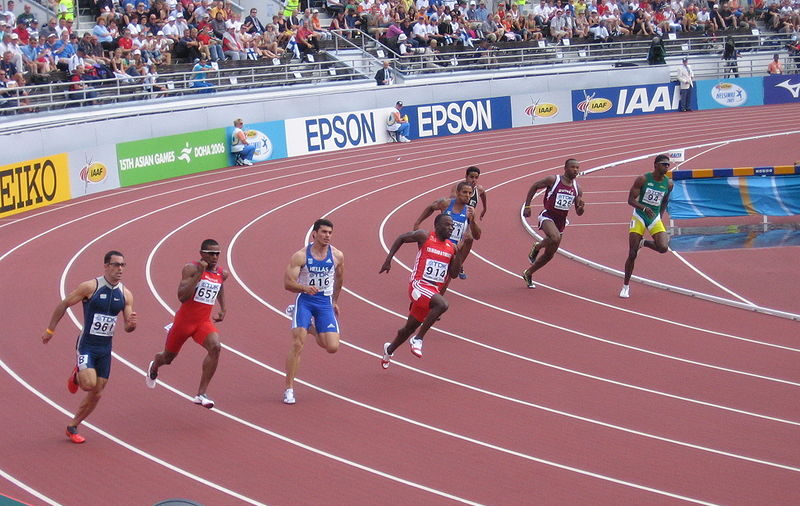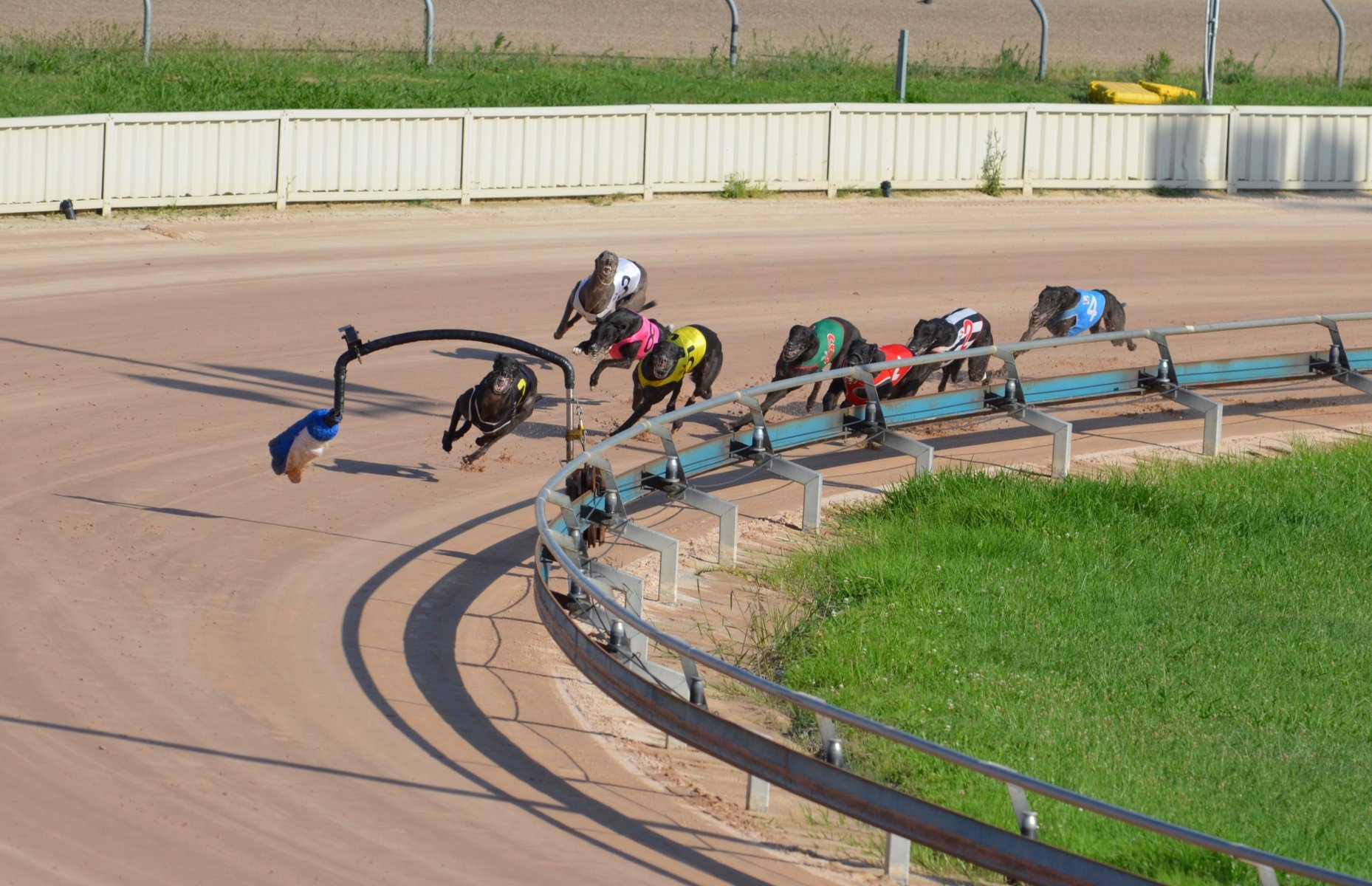by Warren Young, Coalition for the Protection of Greyhounds
As a professional in sport science with coaching qualifications in track and field and strength and conditioning, I have made some observations comparing the human sprint events with greyhound racing.
Track design
In track and field, there are 3 sprint events; the 100m, 200m and 400m. The 100m event is run on a straight track, whereas the 200m and 400m events involve a combination of straight sprinting and running around a bend.
A typical race involves 8 sprinters (much like greyhound racing), but a big difference is that in the track and field sprints, all athletes have to stay within a marked lane. This prevents any physical contact between athletes during races. In greyhound racing, the dogs will typically run towards the rail because they are trained to chase the lure, so it is impossible to prevent the physical contact which can result in dogs falling while running at top speed.
We know that this can lead to severe injuries such as fractured legs, and sometimes death.


If you asked human sprinters to compete in a 200m race where all 8 athletes had to immediately head for lanes 1 and 2 (about the same space near the lure in greyhound racing), they would laugh in your face.
They would tell you that 8 people sprinting flat out in 2 lanes is a recipe for disaster. It would never be allowed because it would inevitably end in injury.
Obviously, greyhounds can’t be made to run in lanes, and so their races are inherently dangerous. Even when greyhounds get to run on straight tracks, they don’t always sprint in a straight line (as you can see in the video below), so they still risk injury from contact with other dogs.
Physical preparation for training
Sprinting at maximum speed is a high-risk activity because the muscles need to contract powerfully, placing huge loads on the tissues. In track and field, hamstring strains are especially common, and so coaches have learned to minimise the risk of injury by using several strategies when preparing their athletes for competition, such as:
- Providing adequate time between maximum sprint training sessions and races to allow for recovery. They would never race once per week all year round as greyhounds sometimes do.
- Carefully monitoring training workloads to ensure there are no sudden increases from session to session or week to week that lead to injury.
- Using interval training and strength training methods to develop the robustness of the muscles.
- Have an “off-season” period without racing to allow the athlete to physically and mentally recover from the rigours of competition. This is also a time in the year to build up physical capacities and make the body more resilient and less likely to experience injury.
These strategies not only make the athletes better, but are also part of the duty of care that coaches need to be successful and accountable. Coaching athletes is a profession that is informed by science and requires formal qualifications.
To work with elite athletes, coaches need to work through 4 levels of certification, taking years of course work and experience. This rigorous process allows coaches to develop the necessary expertise to help their athletes reach their potential.
By contrast, to become a greyhound trainer in Victoria or NSW, all you have to do is read a basic booklet or handbook and complete an online test.
Sadly, this lack of rigour or accountability means many greyhounds will fall by the wayside. Clearly, greyhound trainers learn through personal experience, and this involves trial and error. Unfortunately, the error is at the expense of greyhound welfare.
200 metres run at the 2005 Athletics World Championships in Helsinki, https://commons.wikimedia.org/wiki/File:200metres_Helsinki2005.jpg
NSW greyhound race 2018, Farm Transparency Project
